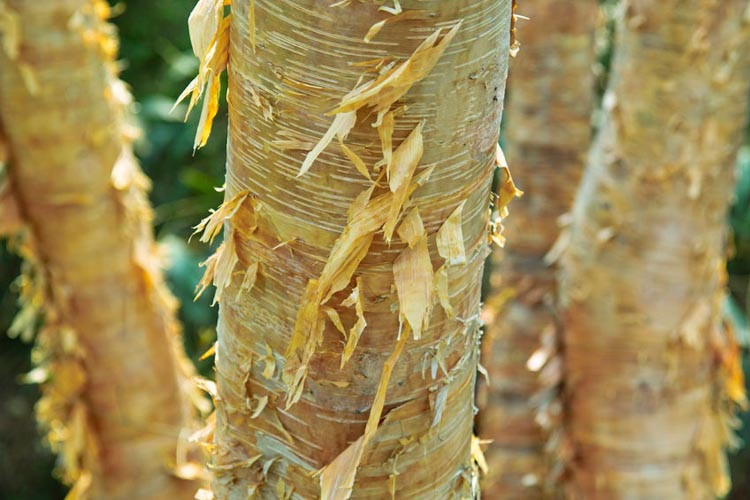Betula (Birch)
The Birch tree, belonging to the genus Betula, is renowned for its graceful habit, distinctive bark, and airy foliage.
Habit: Generally, birch trees have a slender, upright or pendulous habit with a crown that can be pyramidal to oval-shaped. The paper-thin layers of bark that often peel away in scrolls are one of the tree’s defining characteristics.
Hardiness: Birch trees generally thrive in USDA hardiness zones 2 to 9, depending on the species. They prefer colder climates and may struggle in areas with hot, dry summers.
Foliage: The foliage of birch trees consists of simple, alternate leaves that are often triangular or egg-shaped, with serrated margins. The leaves are usually a vibrant green, turning golden-yellow in the fall.
Flowers and Bloom Time: Birches are monoecious, meaning they produce both male and female flowers on the same tree. These flowers are called catkins and typically bloom in late winter to early spring. The male catkins are long and droop down, while the female catkins are shorter and stand upright.
Uses: Birch trees offer stunning landscape appeal with their slender, graceful habit and iconic bark. They make excellent focal points and are ideal for woodland or naturalistic settings. Beyond their aesthetic appeal, birch trees are commercially important for timber and the sap is often used to make birch syrup. The wood is light but strong, and it’s often used for furniture, plywood, and pulpwood. Birch is also used in traditional medicine and the flexible bark can be used for crafting.
Benefits: Birch trees are excellent for soil stabilization and provide food and habitat for various wildlife, including birds and small mammals. They also serve as host plants for several species of butterflies, enriching the local biodiversity. Birch leaves create a light, dappled shade, allowing understory plants to thrive.
The birch is more than just a pretty tree; it’s a hardy species with various uses and benefits that make it an excellent choice for any garden or larger landscape.

